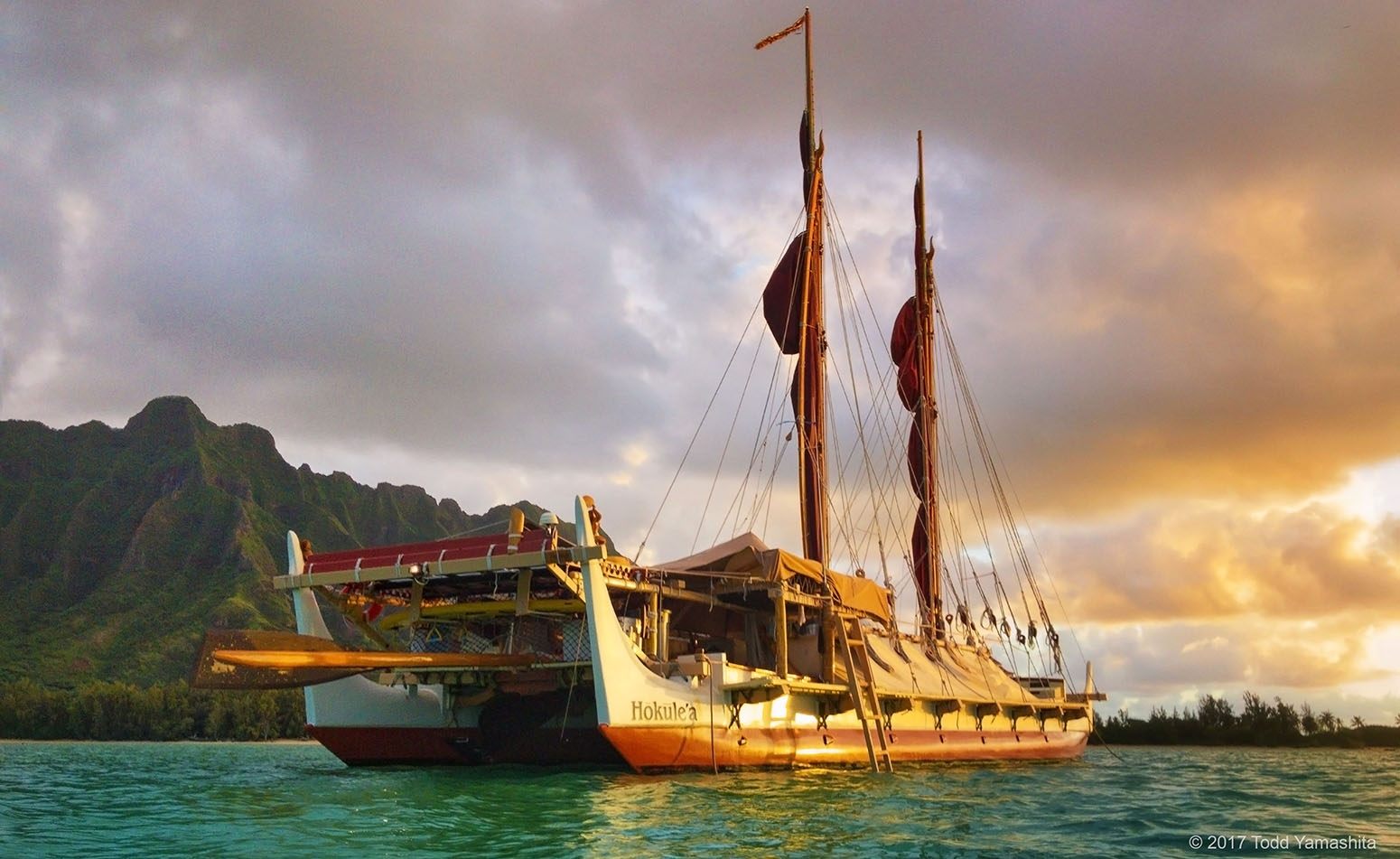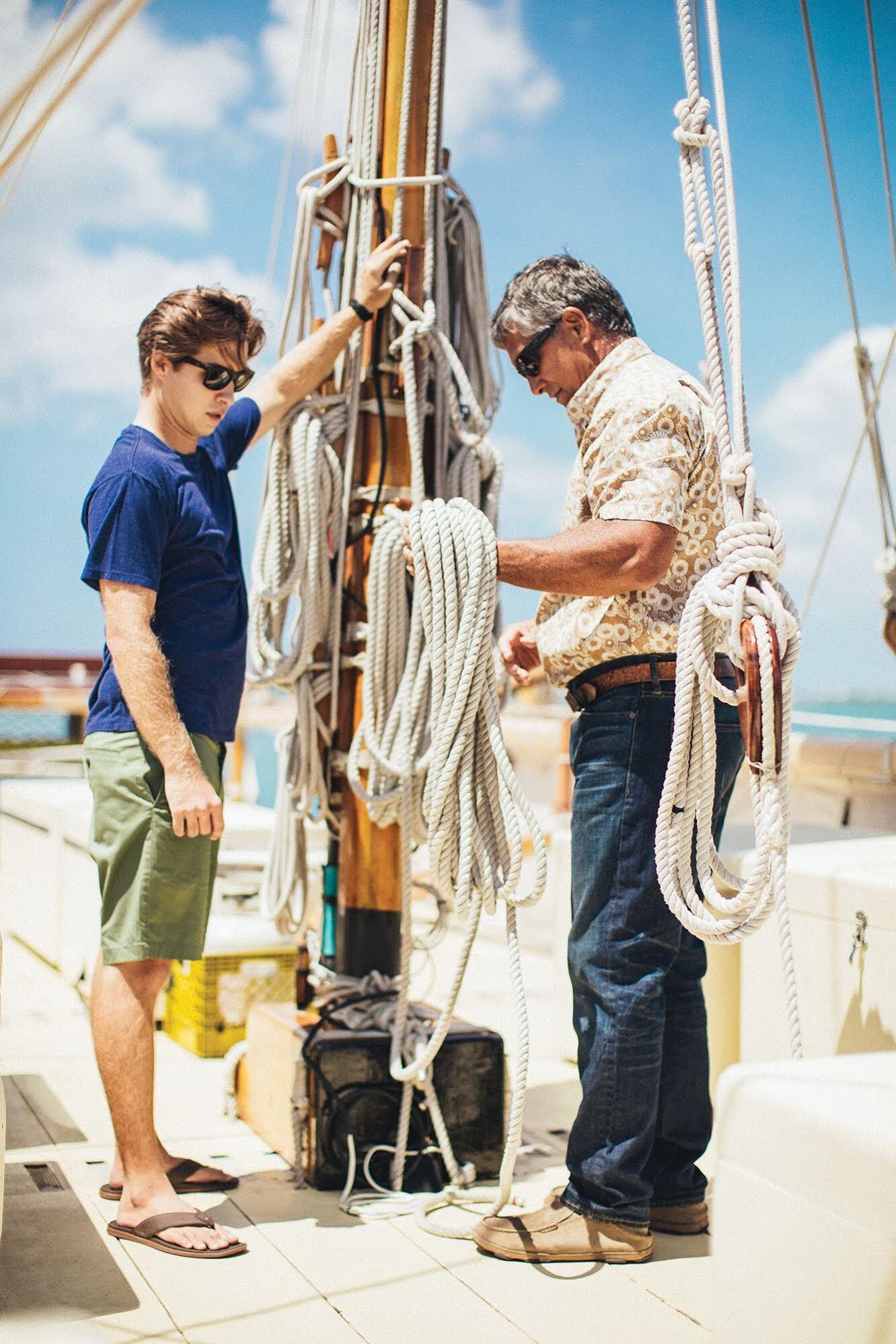The Canoe That Changed Hawai‘i
How Hōkūleʻa and its amazing voyage across the Pacific helped kickstart a Hawaiian cultural renaissance.

For its crewmembers, Hōkūleʻa is more than just a canoe: it changes how they live their life, and how they plan to care for the world. “Hōkūleʻa,” which means “star of gladness,” has for many in Hawai‘i become a shining example of how to inspire new generations of Hawaiians to keep their culture alive and share it with the world.
Hōkūleʻa is a waʻa kaulua, or a traditional, Polynesian double-hulled voyaging canoe. When the Polynesian Voyaging Society (PVS) built the vessel in 1973, it was the first of its kind that had been created on the islands in 600 years.
The PVS was founded with a mission: to prove that ancient Polynesians could have settled the islands using traditional wayfinding methods. At the time, voyaging canoes were extinct, there wasn’t a single person in Hawai‘i who knew how to navigate them, and some doubted that the canoes and techniques were any good to begin with. There was a common misconception that the Polynesians had merely found the Hawaiian islands by accident.
It wasn’t just the nautical know-how that had disappeared. Bruce Blankenfeld, a captain and master navigator who grew up in Hawaiʻi, says that Hawaiian children learned almost nothing about their own culture. “Everything we learned in school was American history, the Civil War, the 15th and 16th president of the United States.”
Hawaiian history wasn’t taught in schools and hardly anyone spoke the Hawaiian language. If Hawaiian culture was brought up at all, it was framed in a way that “led one to believe that there are no Hawaiians anymore; that they’re gone,” Blankenfeld says.

Hōkūle‘a’s inaugural journey in 1975 helped turn the tide. Using only stars, swells, and other signs of nature, the crew successfully navigated the Polynesian Triangle under the direction of the esteemed Micronesian wayfinder Mau Piailug. The celebrated voyage forced scholars to reconsider previous truths and helped fuel a Hawaiian cultural renaissance in areas from from hula to language. Blankenfeld says of the journey: “It helped to redefine who we are as Hawaiians.”
Almost 40 years after the canoe’s maiden voyage, Hōkūle‘a circumnavigated the entire world. The Mālama Honua Worldwide Voyage began in 2014, covered 40,300 nautical miles, and stopped in more than 150 ports in 23 countries and territories– a journey less about defining Hawaiian culture than sharing it with others.

As Jenna Ishii, one of the apprentice navigators who helped guide Hōkūle‘a’s journey around the globe, puts it: “It took us going around the world to discover that everyone’s pretty similar. Everyone wants healthy, safe communities for their children. They want family and connection.”
Hōkūle‘a’s Mālama Honua worldwide voyage is over, but the need to mālama honua (translated simply as “to care for our Island Earth”) is more urgent than ever.
In Hawaiian, the concept means tending to our world as if it were an island. With resources dwindling across the globe, we must work together as islanders do to keep our planet thriving. Hōkūle‘a has already proven that it’s possible to reverse a path to extinction.
“The Hōkūle‘a is an ambassador for change,” says Blankenfeld. “If we believe that we can make a difference— to impact and to arrest and then reverse our environmental degradation across the globe— then that’s the big first step to doing it.”
The Mahalo Hawai‘i Sail is currently underway in the Hawaiian islands through March 2019, bringing attention to community conservation efforts such as the Limu Festival in Hana, Maui and the Hawai‘i Island’s Hawaiian Legacy Reforestation Initiative.
Speaking on the goal of the current sail, Blankenfeld says: “We want to meet others and have really productive conversations about things [like climate change] that we’re all confronted with.” In the future, PVS also hopes for a Pacific Rim voyage.

“We want to get some engagement going with these countries that we share the Pacific Ocean with,” Blankenfeld explains. “What is the perception about this ocean? Is it foreign to you, is it a dumping ground, what is it? The common thing we have with all these countries and regions is this ocean.”
Voyaging canoes, past and present, were built as vessels of exploration. They traveled to bring back knowledge, whether in the form of sweet potatoes from South America or lauhala for weaving and building houses from Australia. “Part of the process of discovery is finding something that has tremendous benefit to people, from feeding the masses to healing,” Blankenfeld says of Hōkūle‘a, its voyages, and its community. “That’s no different from today. We just trained a new generation of navigators. It’s a living culture.”
The Aloha Spirit brought to you in partnership with OluKai.








Follow us on Twitter to get the latest on the world's hidden wonders.
Like us on Facebook to get the latest on the world's hidden wonders.
Follow us on Twitter Like us on Facebook